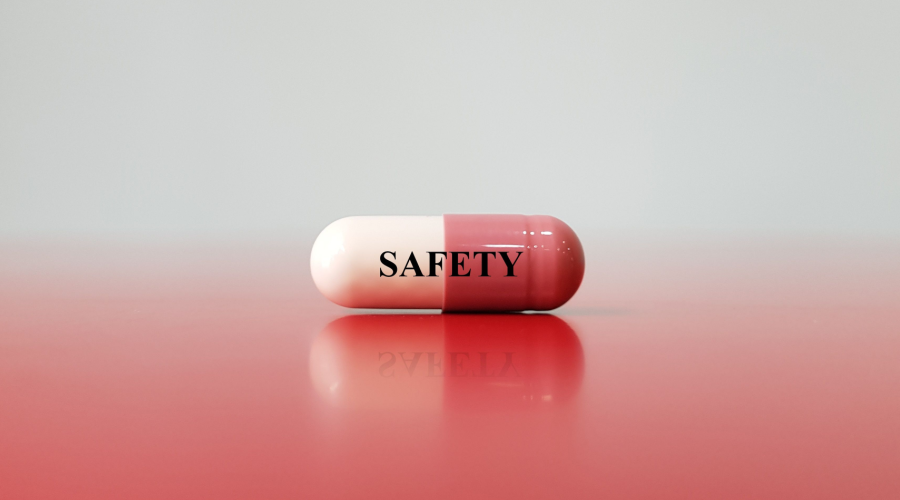Inside: Pharmacy inventory is a key financial asset for independent pharmacies. Get inventory management tips and best practices from a finance pro.
Independent pharmacies today need to optimize how much inventory they keep on hand.
“Inventory is usually a pharmacy’s largest asset. Once inventory levels are established, they become an important input to the financial aspect of any business, as they are key to driving cash flow and profitability,” said Don Raby, CPA, CGMA, Chief Financial Officer at PBA Health, an independently owned pharmacy services organization dedicated to helping independent pharmacies succeed in today’s marketplace.
PBA Health provides group purchasing services, expert contract negotiations, and distribution services. The company also operates a VAWD-accredited warehouse and is a member of the Healthcare Distribution Alliance (HDA).
Too much inventory translates to too little cash. Also, to less profitability. However, too little inventory can mean lost sales. If you don’t have the products patients need, they’ll go to another pharmacy to fill their prescriptions.
“As a pharmacy owner, you have many facets to consider when managing your inventory. And certain best practices can drastically improve your bottom line,” Raby said.
Base Stock vs. Safety Stock
You can break down inventory into two broad classes:
1. Base stock
Base stock means the portion of inventory that you replenish after selling it to patients. “Think of base stock as the foundation of your pharmacy from which prescriptions are filled day in and day out,” Raby said.
2. Safety stock
“Safety stock is the portion of inventory that is held to protect against uncertainty,” Raby said. “It’s that extra bottle that you keep ‘just in case.'”
The rule of thumb in base stock and safety stock is simple: Keep an adequate supply of base stock and as little safety stock as possible.
The Costs of Pharmacy Inventory
Inventory decisions involve a delicate balance between three classes of costs:
1. Ordering costs
Ordering costs are the costs associated with placing an order, receiving and verifying the order, and putting away the stock. These costs will take up a lot of your pharmacy staff’s time.
2. Holding costs (also known as carrying costs)
Holding costs are the costs associated with holding an item in inventory. These costs reflect the opportunity costs of having your cash sit on a shelf instead of in your bank, where you could use it to pay down debt, pay bills or pay suppliers faster to receive better discounts.
3. Shortage costs
Shortage costs are the costs of temporary or lost sales due to not having the inventory on hand when you need to fill the prescription. This cost is the hardest to quantify, but often the easiest to see.
The 3 Types of Pharmacy Inventory Systems You Need to Know
The success of any business depends on the owner’s ability to maintain adequate records of items sold, items received, and items in inventory. And, if you aren’t measuring pharmacy inventory, then you need to be.
“Records provided by an inventory control system should call attention to the need for reorder when necessary or to eliminate ‘dead wood’ inventory when needed,” Raby said.
Inventories are typically controlled and supervised by three methods:
1. Perpetual inventory control
The perpetual method is the most frequently used method today. In this system, complete data records are kept on each item of merchandise. And, additions or subtractions are made with each transaction through the pharmacy operating system. There is an inventory balance plus a receipt of product, minus the actual sale of products to reflect the quantity on hand. This happens automatically.
2. Physical inventory
Physical inventories, on the other hand, are laborious endeavors that pharmacies typically complete annually. “They’re the ‘check’ you need to verify the accuracy of the perpetual inventory on a regular basis,” Raby said.
3. Looking it over
“The ‘looking it over’ method is the old school method still employed by some pharmacy owners,” Raby said. “It is the preferred method for those who like to think they know their patients. But while they may know their patients, they aren’t employing inventory best practices.”
With this method, errors can easily occur. So can overstock situations. “This method also makes it difficult to pinpoint accurate inventory levels, which typically means the pharmacy is seriously overstocked as most operators err on the side of safety stock,” Raby said.
4 Easy Inventory Management Improvements You Can Implement Right Now
Even a pharmacy that does an average job of managing its inventory can see drastic changes with just a few improvements to inventory management. Take a look at these ways you can evaluate your operations and make adjustments to improve your return on sales.
1. Place fewer orders
Many pharmacy owners today still place several small orders throughout the day. They scan their shelves at the end of the day and place a final order before locking up in the evening.
However, when you place larger orders fewer times throughout the week, you spend less time preparing orders and putting orders away, which can ultimately save you money.
If you place three large orders throughout the week, for example, and only the occasional “must have” base stock order, you can organize a more effective work schedule. With consistent orders, you can plan ahead and place more staff on the days where you will need to put away larger orders and you can cut back staff hours on other days.
2. Reduce overall inventory
Get rid of excess safety stock, outdated products, and items that are on the shelves but rarely or never move.
You should return for credit anything that hasn’t moved in the last 30 days.
Then, increase your safety stock on faster moving products to ensure adequate stock for light order days. This decrease in inventory can increase cash flow and decrease cost of goods sold because you’ll be filling the same number of scripts with less inventory.
This increased cash flow also means that you can pay your drug supplier faster and earn even more savings on your cost of goods.
3. Invest in a better inventory system
When you invest in a computer system that has perpetual inventory management capabilities, you’ll offset the expense of the new equipment with the savings you’ll see in other areas of your business.
For example, your payroll expenses will likely decrease because you’ll improve your ordering patterns and reduce the hours worked by your staff.
4. Stop “just in time” ordering
You might think that just in time ordering is the most efficient form of ordering because it can bring cost savings and reduce inventory levels.
However, this thinking doesn’t take into consideration several critical elements.
Just in time ordering only works when you have:
- Reliable delivery
- Reliable supply
- Stable, predictable demand
Meaning, your suppliers will need to have the stock you need at the time you need it with the ability to deliver it to your door.
You’ll also need to know who is walking in your door and what they are going to need. Then, your supplier has to have it in stock and delivered to you in advance of that person walking through the door.
That’s a tough combination in retail pharmacy on any given day.
If you use just in time ordering, you probably try to combat these problems by keeping a good amount of safety stock on hand, but that defeats the theory of the system.
A Member-Owned Company Serving Independent Pharmacies
PBA Health is dedicated to helping independent pharmacies reach their full potential on the buy-side of their business. Founded and owned by pharmacists, PBA Health serves independent pharmacies with group purchasing services, wholesaler contract negotiations, proprietary purchasing tools, and more.
An HDA member, PBA Health operates its own NABP-accredited secondary wholesaler with more than 6,000 SKUs, including brands, generics, narcotics CII-CV, cold-storage products, and over-the-counter (OTC) products — offering the lowest prices in the secondary market.












